5 Easy Violin Scales for Beginners with Sheet Music and Violin Tabs
Violin scales with free sheet music, finger charts and audio samples
Not sure where to start practicing scales on the violin?
Learn exactly which scales you should practice as a beginner and how in this article!
Practicing scales on the violin is very important to:
- learn to play in tune (improve intonation)
- practice different bowing techniques
- improve your rhythm skills
- finger speed, flexibility and strength
Actually there’s nothing you can NOT learn with scales. You get to know the violin fingerboard, where all the notes are and in general scales are a laboratory to improve all aspects of your violin playing.
If you start each practicing with scales, you’ll notice that your overall violin technique improves and you can learn all the piece you love to play faster and better.
I’ll dive right into the most commonly used violin scales with sheet music, violin tabs and audio samples. After that I’ll give you some music theory around what a scale is and after that I will give you some tips to practice scales to set you up for success. Scroll down and start with what you’d like to learn first.
First finger frame on the violin
The following scales are the first ones you should learn on the violin. They have the same positions of the fingers: first and second finger apart, second and third close together and third and fourth apart.
A Major Violin Scale
This is the first scale almost all violinists learn and a very comfortable key to play in. It has three sharps, F#, C#, and G#.
Beginner A Major One Octave Violin Scale
(Sensational Scales p. 2-4)
Start on open A. The fingering pattern is easy here because you just have to follow the tapes if you have them. If you don’t have tapes, make sure your high second finger always touches third finger. For the E, you can choose whether to play four on the A string or open E string.

Sensational Scales includes exercises in broken triads. These are the exact same notes and fingerings, just in a different order. Start on A, skip up to C#, come back down one step to B, skip up again, etc.
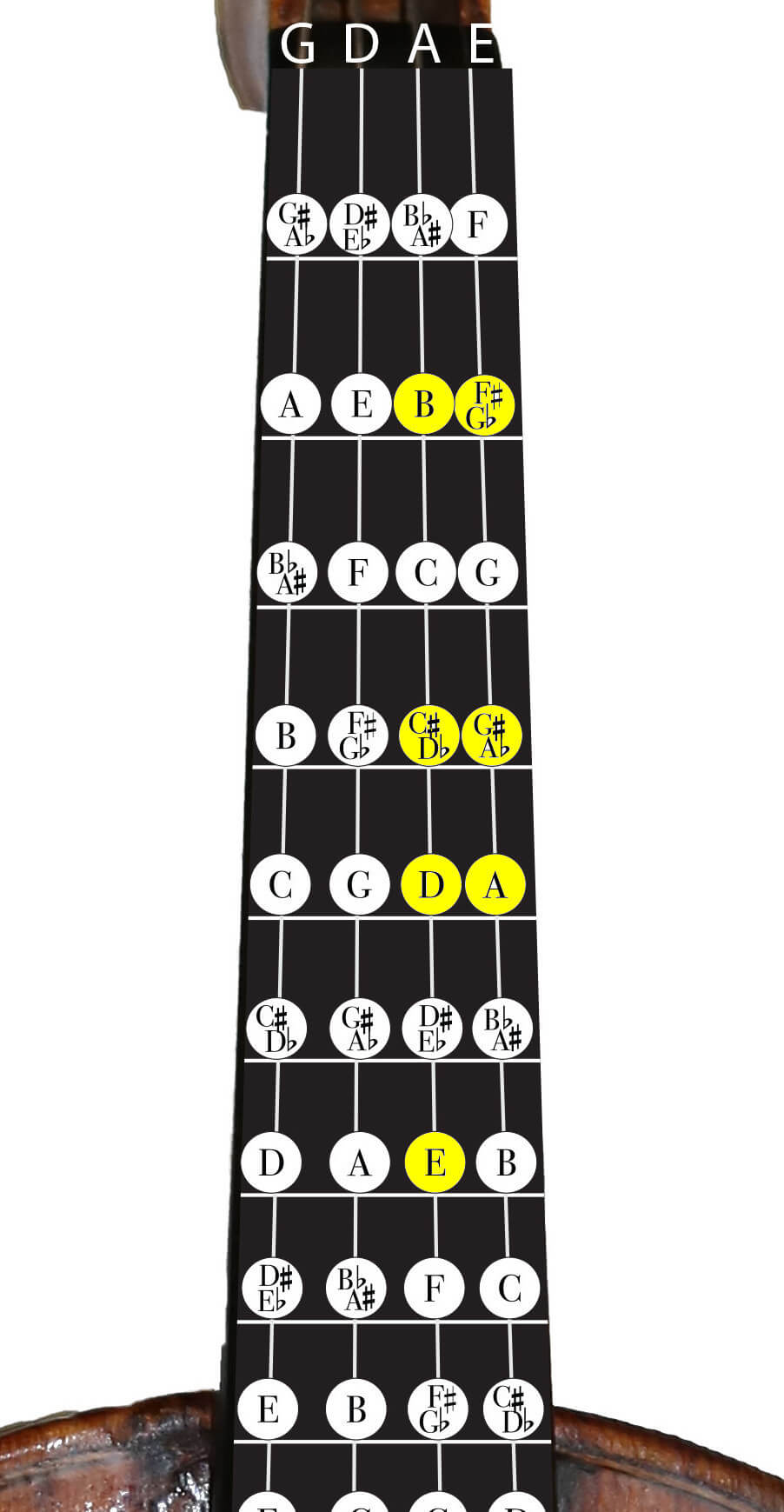
D Major Violin Scale
D major has two sharps, F# and C#, and is the next easiest scale for beginners.
Beginner D Major One Octave Violin Scale
(Sensational Scales p. 2-4)
This is the exact same fingering pattern as A major and G major, just starting on the open D string.

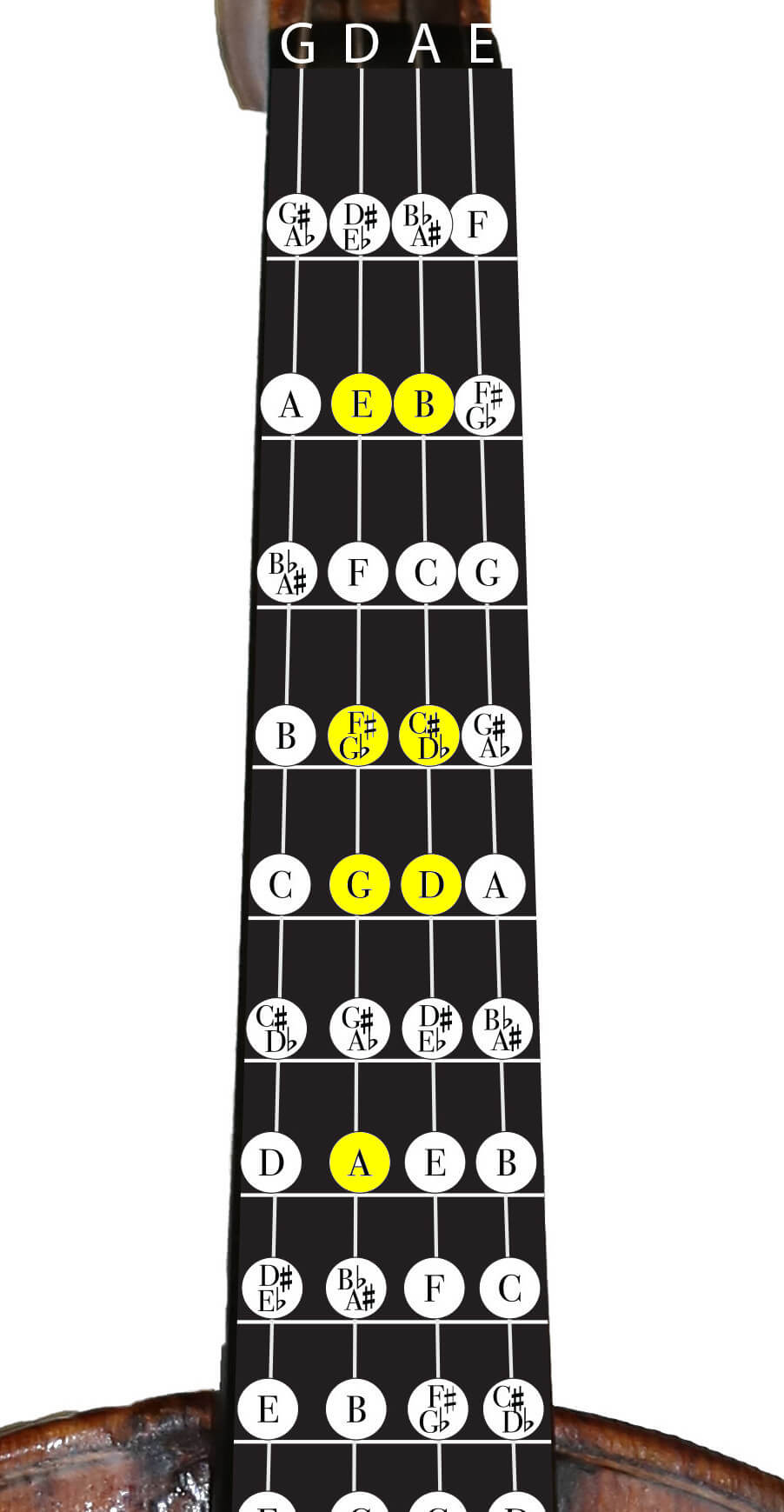
G Major Violin Scale
G major has one sharp, F#. It is the second key most violinists learn to use.
Beginner G Major One Octave Violin Scale
(Sensational Scales p. 2-4)
This scale starts on open G, the lowest note on the violin, and goes up to 3rd finger D string. Play high 2’s on both strings. You may notice this fingering is exactly the same as A major one octave, just starting on a lower string.

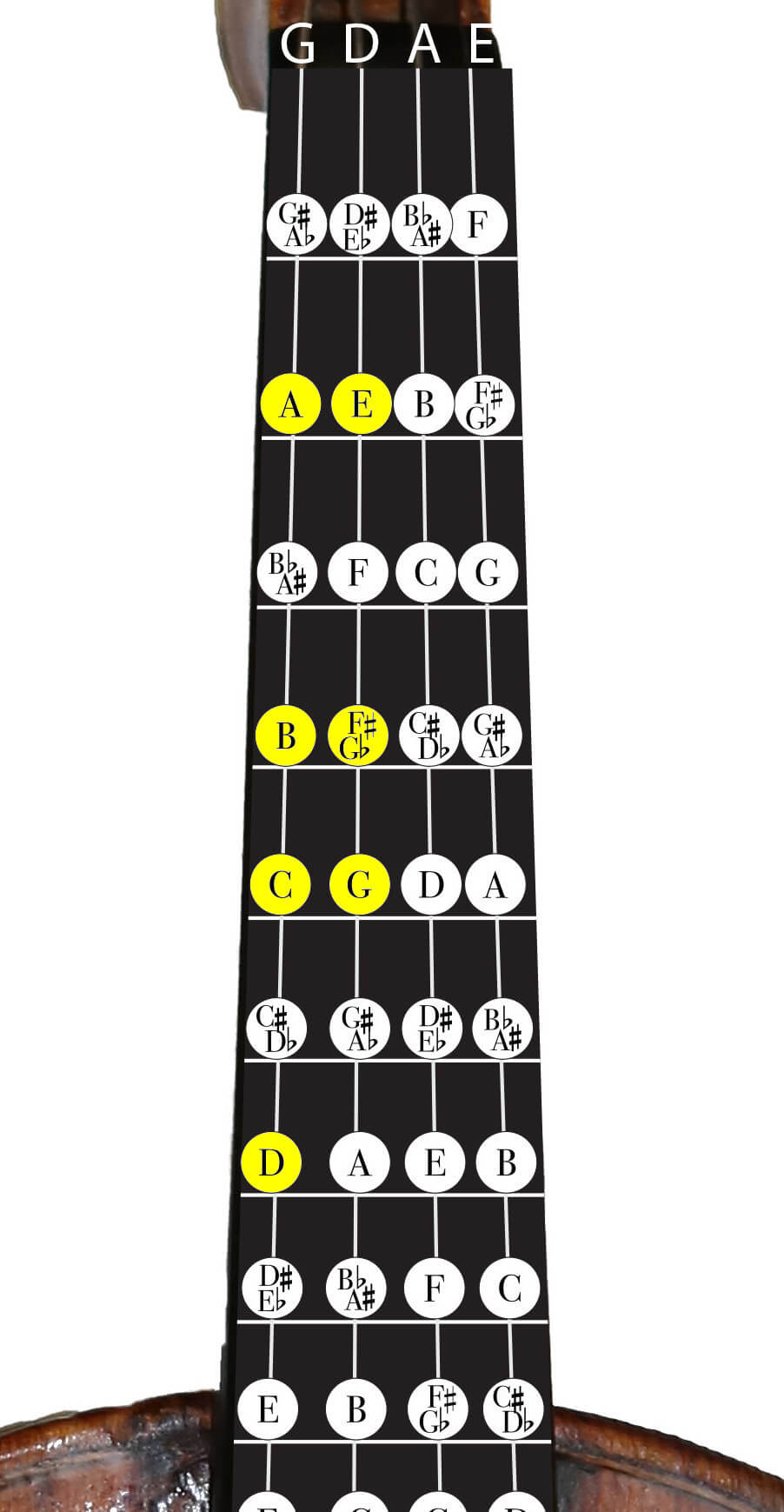
Violin scale with the low second finger
In C major you learn the low second finger on the violin. This means that you place the second and first finger close together. You’ll learn more low second finger scales in my free scale book Sensational Scales.
C Major Violin Scale
C major is the major key with no sharps or flats. On the piano you play this key easilly with just the white keys. As the violin is tuned in fifths however, we have different finger frames in this scale and it’s not the easiest scale even thought the key seems easy.
Beginner C Major One Octave Violin Scale
(Sensational Scales p. 5-7)
For this scale, you will need to use low 2nd finger, so make sure your 2nd finger touches your first finger when you put it down. Begin with 3rd finger on the G string, up to low 2nd finger on the A string. This is a really great scale to practice with drones.

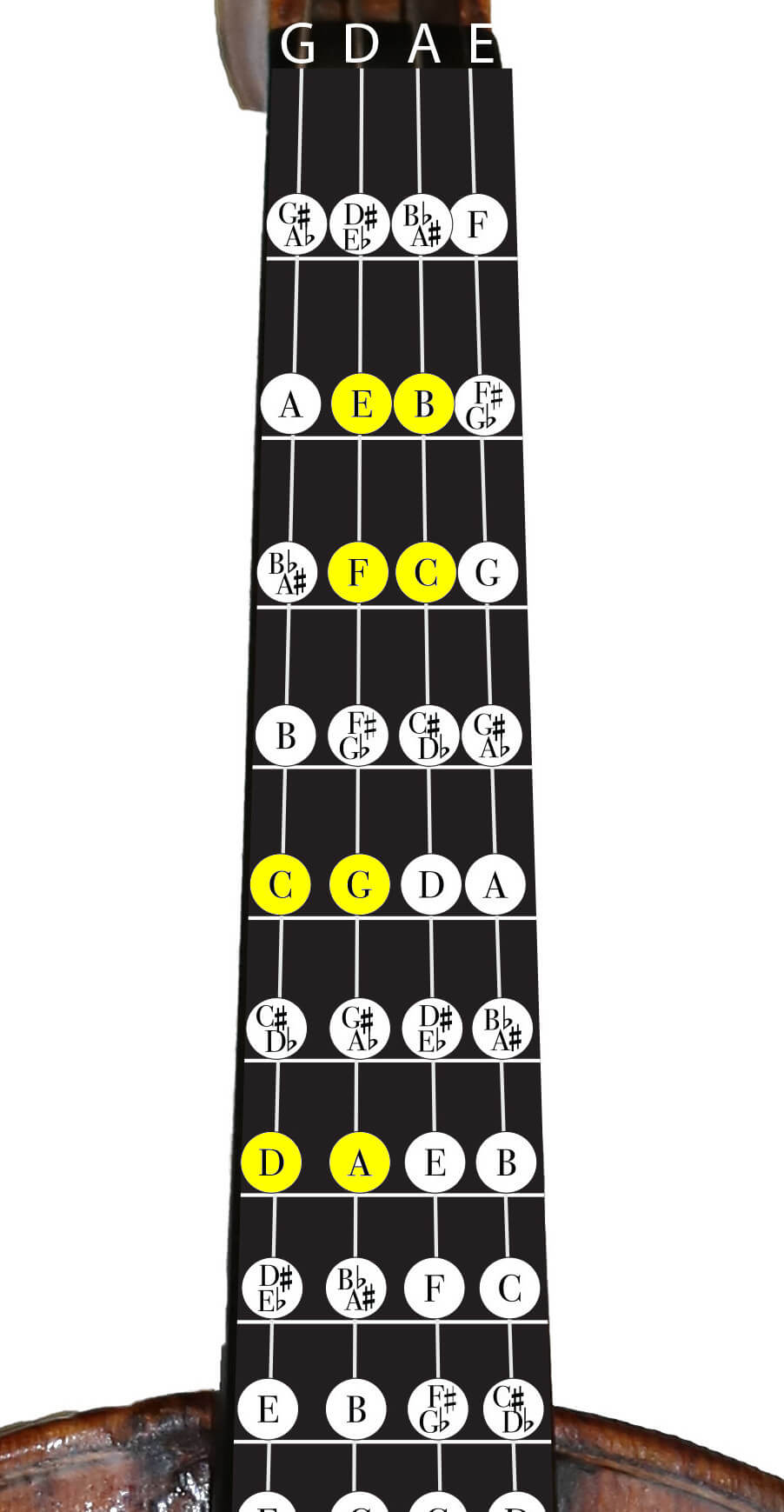
Violin scale with the low first finger
F major is the first scale you learn with the low first finger. This means that although we’re playing low second fingers, the first and second fingers are still apart. This is because the first finger is also lowered. You’ll learn more low first finger scales in my free scale book Sensational Scales.
F Major Violin Scale
This is the only scale on this list that has a flat in the key signature, B♭. This scale is excellent for practicing low 1’s.
Beginner F Major One Octave Violin Scale
(Sensational Scales p. 12-14)
This scale might seem a bit more challenging at first, but just take it slow. This scale has B and F♮, so all the 1st fingers should be low. Place your finger behind the first-finger tape just a tiny bit above the nut. Use a drone if you have trouble playing those notes in tune.

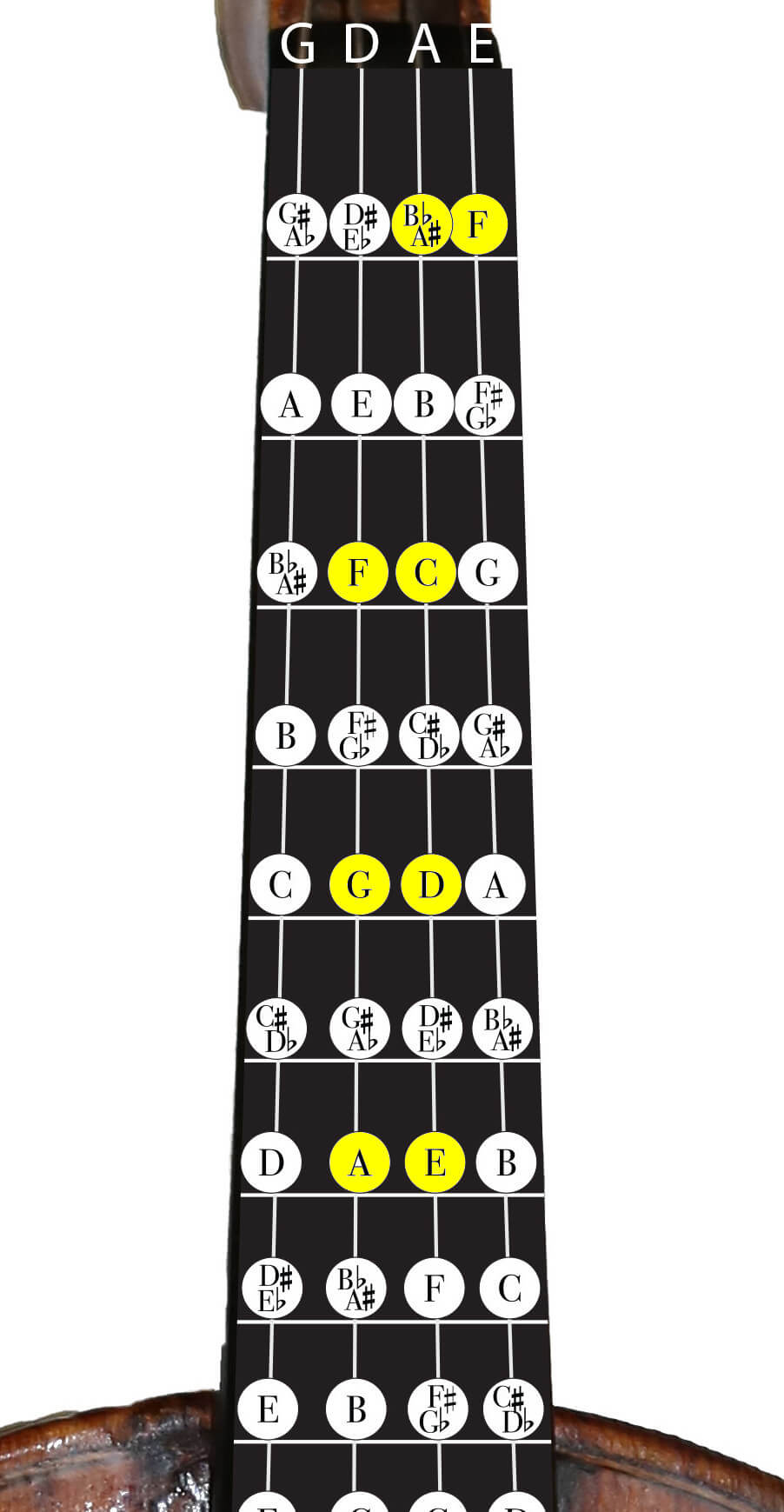
All the sheet music you see in this article came from my book Sensational Scales. It’s a 85 page violin scale book that goes from simple beginner scales all the way to all three octave scales and arpeggios.
The beginner scales go together with finger charts, so even if you’re not that comfortable with reading notes, you can follow along.
Unique about this book is that it’s not ordered per key, but per finger frame and level of difficulty. It will take you through all the scales step by step. You know exactly what to do in your violin scale practice.
And the price? It’s FREE!
What is a violin scale?
A musical scale is any set of notes arranged in ascending or descending order. For example, if you want to start a scale on the note C, all the other notes must be played going up or down from C. There is no jumping around or changing directions.
Complete scales, as they are written in exercise books, typically begin and end on the same letter name, but if you look at any sheet music, you will often see little runs of anything from four to twenty-four notes. Although these passages can look intimidating, they are usually based on some sort of scale, so practice scales diligently in order to play these runs with ease.
So if a scale is a set of notes arranged in a particular order, how do we know how close together to put the notes? All western music is built on steps. There are just two kinds, half-steps and whole-steps. If you were to start at the bottom of a piano keyboard and go up playing every single key, you would be playing half-steps. If you count the half-steps between middle C and the C one octave higher, there are 12. (Note: in music we ALWAYS count the first note we play as step 1.) A whole-step is two half-steps put together.
Most scales are a specific combination of half-steps and whole-steps. Although there are many different types of scales, in this article we will only mention the two most common, major and natural minor. The steps of a major scale are WWHWWWH. The steps of a minor scale are WHWWHWW. For example: for the C major scale, start on a C, go up one whole-step to a D, another whole-step to an E, etc. For a C minor scale, go up one whole-step to a D, one half-step to an E♭, one whole-step to an F, and so on. So even though there are twelve steps in an octave, most scales will only use eight of those steps. Let’s look at the steps of the major scale, as that’s the first scale you’ll learn on the violin:
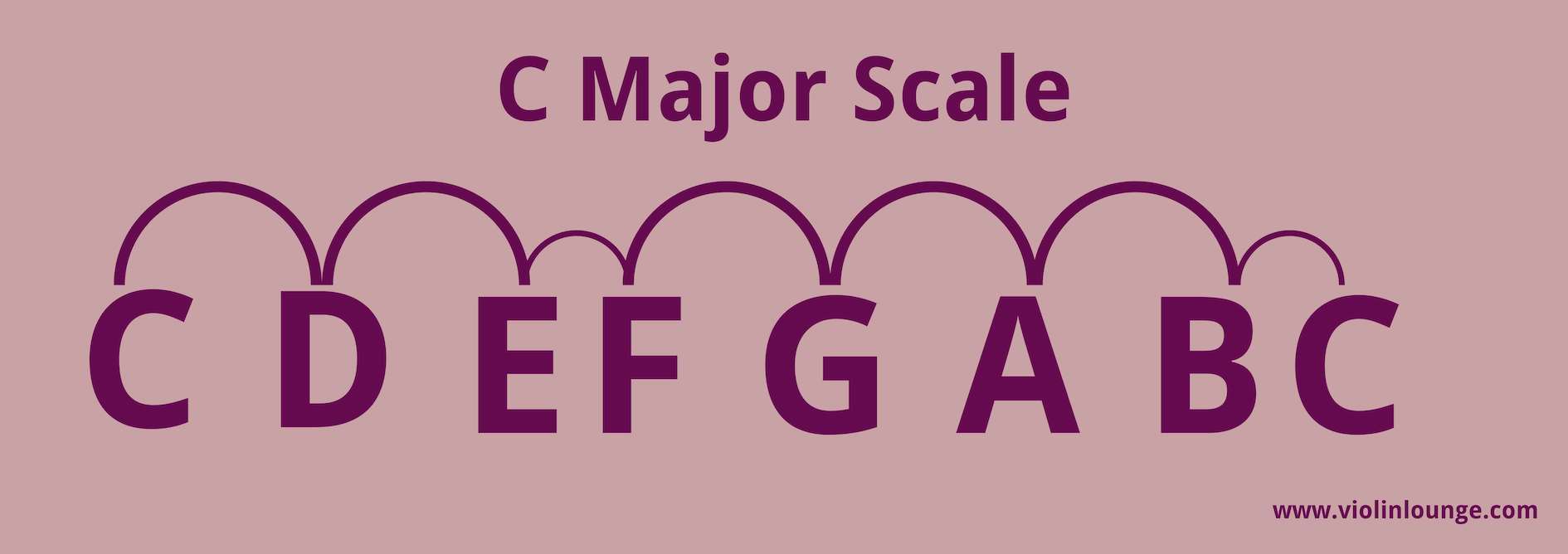
How to Practice Scales on the Violin
As a beginner violinist you might not be sure how to incorporate scale practice in your practice routine, so here are some tips to get you started.
First play the scale very very slowly and listen carefully for each individual note. Keep playing the same note until it’s absolutely in tune. To check yourself you could use my free online violin tuner right here.
When you’re warmed up you can add rhythm to the mix and practice the scales with a metronome (for example my free online metronome right here). Start with a low tempo, for example 60 BPM.
If you have time left and everything is going well, you can add in different rhythms and bowing techniques. Take the rhythms and bowing techniques from the etudes and pieces you play. In that way the scale prepares you well and will save you time.
When to practice scales?
First of all start your practice routine with scales, so you’re warmed up to play your etudes and pieces better in tune.
How long to practice scales?
About a third of your practice time should be devoted to scales. Say you practice an hour a day, then practice scales for twenty minutes. Even if you have just fifteen minutes, make sure to do a short five minute scale warm up.
Which scale to play first?
Pick the scale that corresponds with the key(s) the piece you are going to practice is in. This warms you up to play the piece in tune.
FREE Violin Scale Book
Sensational Scales is a 85 page violin scale book that goes from simple beginner scales with finger charts all the way to all three octave scales and arpeggios

Hi! I'm Zlata
Classical violinist helping you overcome technical struggles and play with feeling by improving your bow technique.
Congratulations on learning the five most useful major scales on violin!
No matter how long you’ve been playing or what level you’re at, improving your scales is the best step to improving your overall violin skills. After learning these five, check out Sensational Scales for comprehensive exercises and explanations of all violin scales.
What’s the best violin scale book?
To practice violin scales, you need a good violin scale book. There are different ones on different levels and with pros and cons.
In this article I describe seven violin scale books, so you can decide what’s the best scale book for you!

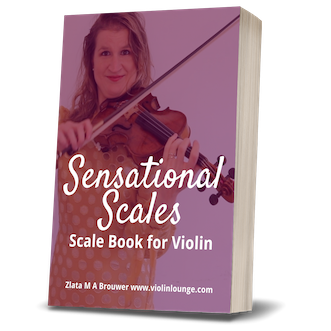
0 Comments